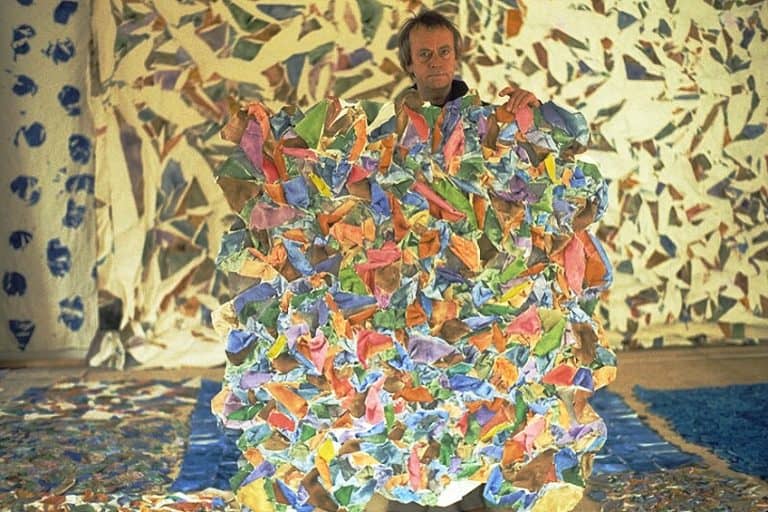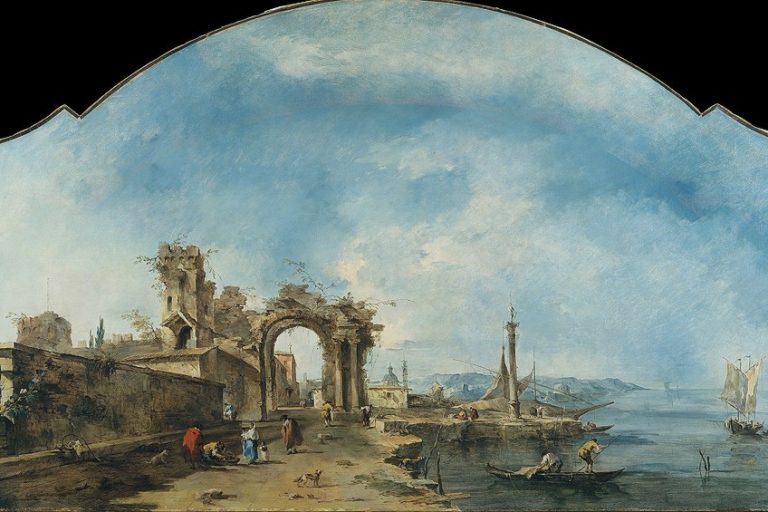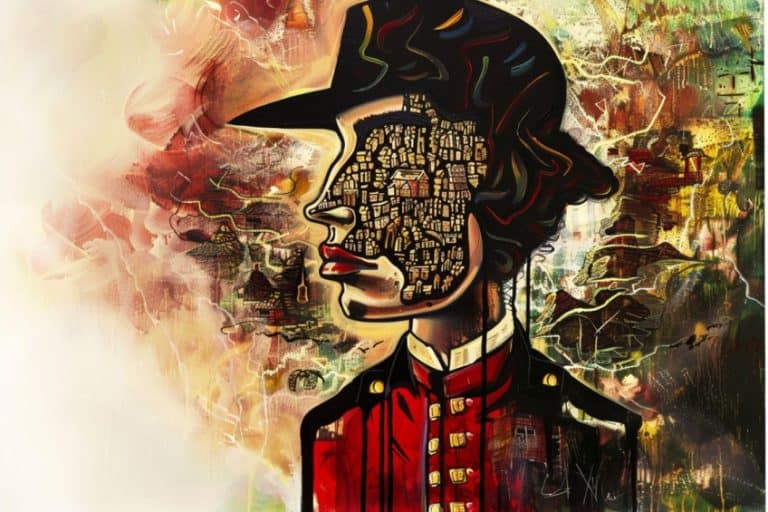Famous Asian Artists – An Introduction to This Diverse Diaspora
There are many artists from the broader Asian diaspora whose works are largely under-published, despite their impactful and innovative contributions to the art space. In this article, we will explore a selection of famous Asian artists, who belong to the different diasporic groups in Asia and who have championed some of the most enriching and profound works across painting, photography, sculpture, and performance art. Keep reading to learn more about our favorite Asian artists, from the South to the West!
An Introduction to Asian Art
In the past, many people stereotypically thought of Asia as defined by the specific countries of leading economic growth or artistic influence, however, one must take the time to understand that Asia is a massive continent with numerous cultural groups, including the several primary groups that form Asia. Artists of Asian diasporic heritage or whose ancestors and culture originated from a country in Asia are identified as “Asian” artists.
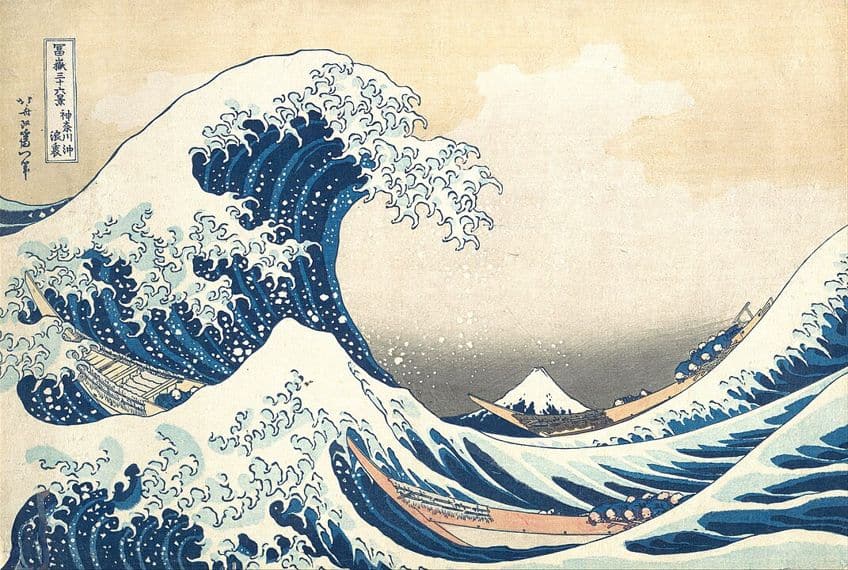
An important point to note about artists of Asian origins is that many have also chosen to operate on a transnational basis such that art production becomes more nuanced in terms of what shapes an artwork and how artists choose to incorporate their experiences into their practices. A few themes discussed in some of the works of famous contemporary Asian artists also tackle topics such as displacement, refugee experiences, and postwar fusions of Western and Asian culture from East and South regions. It is also recommended that one explores further the histories of war, civil conflicts, and socio-political climates of the Asian continent in the 20th century that greatly shaped the trajectories of many artists of the Asian diaspora across the world.
Among a few historical sites to look at include the Dunhuang Mogao Grottoes, the Banteay Srei temple, the Kenyah Dayak longhouses, and prominent art museums that hold Asian art such as the National Palace Museum in Taiwan, the National Museum of Korea in South Korea, and the Shanghai Museum, among many others.
13 Famous Artists of Asian Diaspora
When looking at the world’s most famous Asian artists, it is almost impossible to pinpoint the best artists of all time, however, below, we have compiled a curated list of 13 well-known early modern and contemporary artists of the Asian diaspora to help you get started on understanding the diversity of styles and themes within Asian art. Perhaps, you might even encounter artists you are not familiar with and discover works that may inspire you!

Raja Ravi Varma (1848 – 1906)
| Artist Name | Raja Ravi Varma |
| Date of Birth | 29 April 1848 |
| Date of Death | 2 October 1906 |
| Nationality | Indian |
| Associated Movements, Themes, and Styles | Academic art, Indian-European painting, Hindu mythology, Realism, portraiture, and early Modernism |
| Mediums | Painting and printmaking |
| Famous Artworks |
|
The father of Modern art in India, Raja Ravi Varma, was among the most famous Asian painters of the late 19th century. Varma’s work has received both strong criticism and praise for his realistic depiction of Indian culture, Hindu mythology, and Western painting styles that emerged from an early age. Varma’s practice is largely recognized by his depiction of Hindu deities and key moments of Indian history that are currently housed at many museums across the country. Varma was the first Indian artist to merge his cultural iconographies with Western techniques in painting and went on to influence the development of Indian music, literature, and films. Additionally, his work also played a major role in shaping one of the country’s best-selling comic series, the Amar Chitra Katha comics. Other subjects in his work portray the different Indian gods and goddesses in modern studio-styled portraits and everyday life scenes, which revolutionized the way people saw Indian deities and removed them from their supernatural worlds. Varma’s style was further shaped by his mastery over light and texture, which beautifully portrayed the nuances in jewelry, fabrics, furniture, and hairstyles. Varma’s depiction of Indian women also portrayed them in traditional fashions of the time, as reclining figures or lost in meditation or thought.
Apart from the immaculate realism, his paintings were also embedded with symbolism inspired by his travels with his brother, which was usually looked down upon by many during his era.
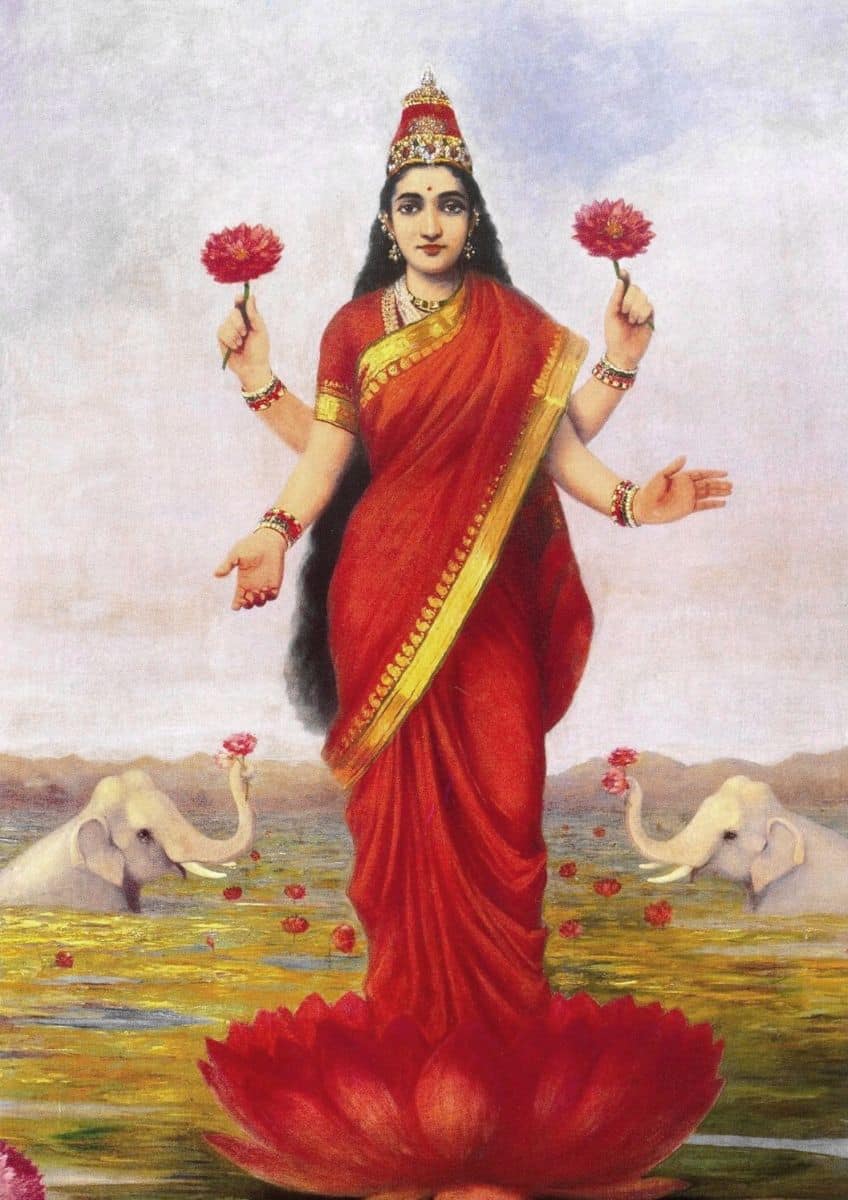
C. C. Wang (1907 – 2003)
| Artist Name | Chi-Chien Wang |
| Date of Birth | 14 February 1907 |
| Date of Death | 3 July 2003 |
| Nationality | Chinese |
| Associated Movements, Themes, and Styles | Literati art, Modern art, Contemporary art, American post-war abstraction, abstract calligraphy, and improvisation |
| Mediums | Painting and calligraphy |
| Famous Artworks |
|
Renowned art collector and painter Chi-Chien Wang was also recognized as C. C. Wang is known for having created one of the largest collections of pre-modern Chinese art in the world. Wang was born close to Suzhou in China and grew up honing his calligraphy skills. He later studied landscape painting and moved to New York, where he worked as a consultant for Sotheby’s and dabbled in real estate. In addition to his 70-year worth of artworks, Wang’s practice was also shaped by his first-hand interactions with great masterworks from his home country, which later laid the foundations for the development of Chinese painting education in the West. His style also reflects the last remnants of the literati style, which were fused with his exposure to Western European and modern art movements, including graffiti and abstraction. He was widely known as one of the last students of literati art, whose family lineage traced back to the Song and Ming Dynasties. Wang’s early tutors were Wu Hufan and Gu Linshi who taught him landscape paintings; however, he wished to explore Western educational styles and obtained his law degree from Suzhou University. While he studied law, Wang also taught at the Shanghai School of Fine Arts and was supervised by Liu Haisu, who was passionate about merging Western techniques with traditional Chinese styles.
Today, many works from his collection are housed in prominent museums such as the British Museum, the Cleveland Museum of Art, and the Metropolitan Museum of Art, where over five dozen paintings and calligraphy artworks were acquired by the museum.
Alfonso Ossorio (1916 – 1990)
| Artist Name | Alfonso Angel Yangco Ossorio |
| Date of Birth | 2 August 1916 |
| Date of Death | 5 December 1990 |
| Nationality | Filipino-American |
| Associated Movements, Themes, and Styles | Modern art, Abstract Expressionism, Asian art, Surrealism, found objects, and art brut |
| Mediums | Painting and drawing |
| Famous Artworks |
|
Filipino-American artist Alfonso Ossorio is perhaps one of the most intriguing Asian painters of the 20th century. While his work is largely underrated, his practice encompasses a variety of art styles that range from Surrealism to Abstract Expressionism. Ossorio’s paintings were influenced by the art brut movement and explored the use of found objects in art through unusual and experimental ways. The Filipino-American artist was born in Manila to a family of mixed cultural descent, including Chinese, Spanish, and Filipino cultures, which exposed him to a wider variety of visual languages. Ossorio was educated in the United Kingdom and settled in the United States, where he attended Harvard University and the Rhode Island School of Design. Ossorio worked independently and was already a wealthy artist who desired to follow his own style since he refused to conform to other conventions. Among his best pieces were his Congregations series with his legacy surviving him through the Ossario Foundation located in Southampton in New York City.
The artist was also an avid fan and collector of works by Jackson Pollock and Jean Dubuffet, who also held a degree of influence over his painting style, leading him to expand on more abstract and non-representational compositions.
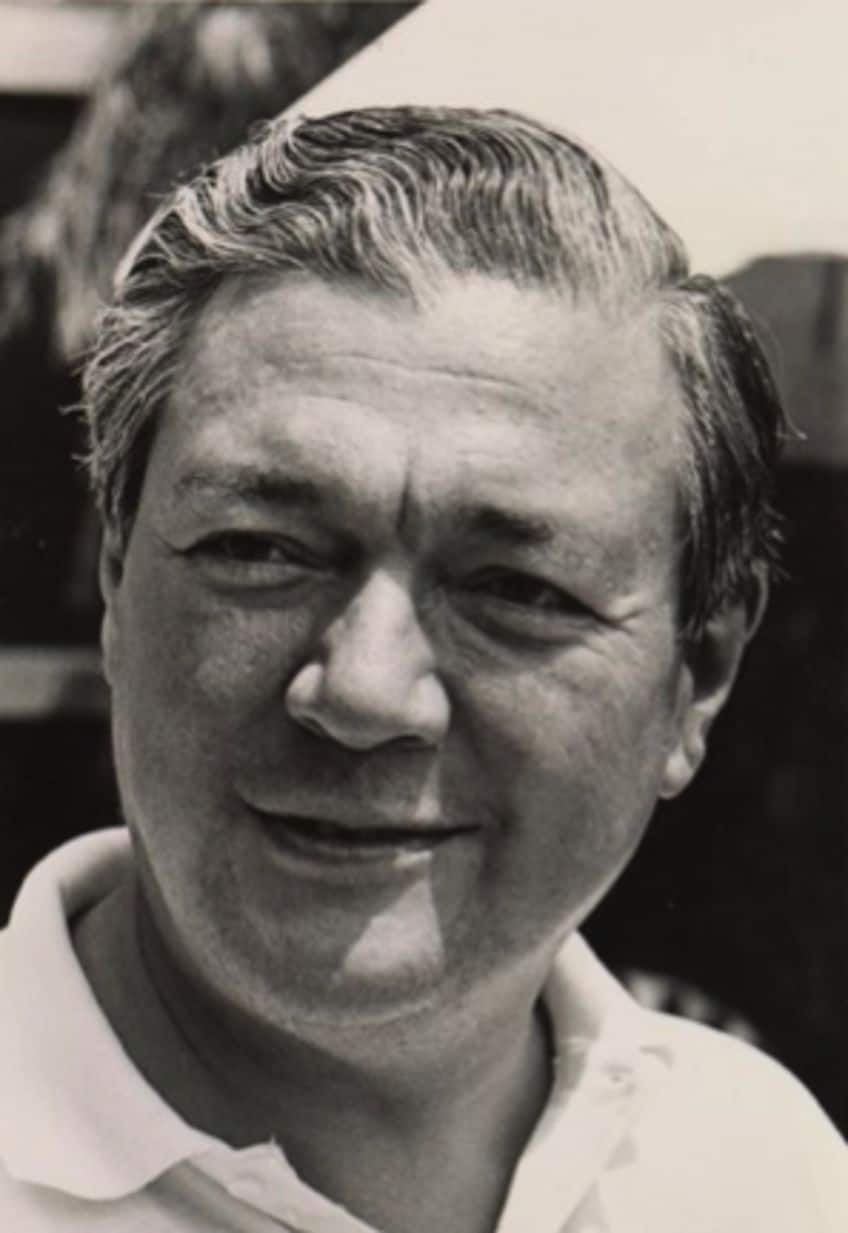
Ruth Asawa (1926 – 2013)
| Artist Name | Ruth Aiko Asawa |
| Date of Birth | 24 January 1926 |
| Date of Death | 5 August 2013 |
| Nationality | American |
| Associated Movements, Themes, and Styles | Contemporary art, Modern art, Asian art, organic form, looped wire art, and Mexican basketry |
| Mediums | Painting, sculpture, printmaking, and drawing |
| Famous Artworks |
|
American postmodern sculptor Ruth Asawa was a renowned contemporary artist of Japanese descent, who was born among the families interned at Santa Anita Park in the 1940s. Asawa’s experience in the internment exposed her to the talents of Disney artists who were also interned and she was later transferred to another internment camp in Arkansas. Asawa trained as an educator in Wisconsin and North Carolina, and later settled in San Francisco, where she began exhibiting her artworks. She worked primarily in sculpture, painting, and drawing, and held many solo and group shows across popular museums like the Whitney Museum of American Art and the Museum of Modern Art. Asawa’s fiber sculptures were featured in a 2020 series of stamps by the U.S. Postal Service, which reflected her best-known work in organic sculpture. Her sculptures integrated materials such as bronze, galvanized wire, and stone, and were inspired by Mexican basket-weaving practices. Her practice was also preoccupied with the notion of a line and its economy in space, as existing as an enclosed object within space yet not blocking it.
Among other notable influences on her work include Merce Cunningham, Josef Albers, and John Cage, who she studied under at Black Mountain College.
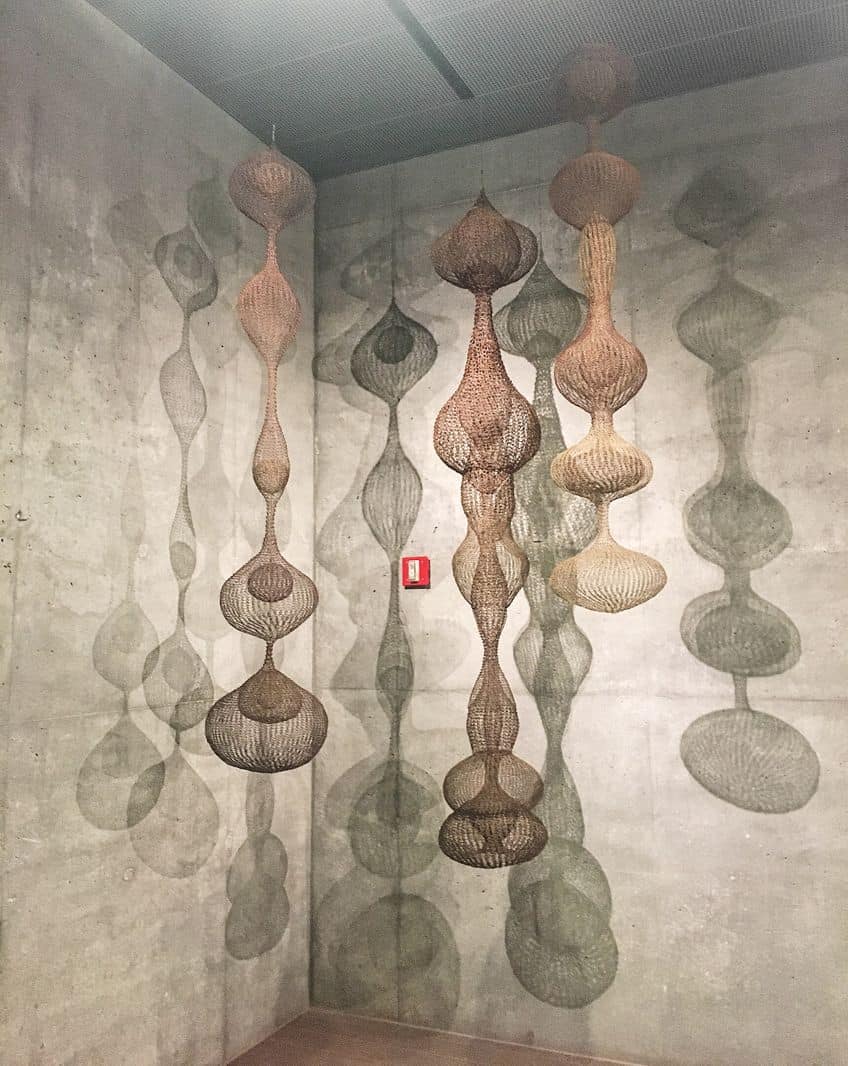
Yayoi Kusama (1929 – Present)
| Artist Name | Yayoi Kusama |
| Date of Birth | 22 March 1929 |
| Nationality | Japanese |
| Associated Movements, Themes, and Styles | Contemporary art, Asian art, Modern art, Feminism, fiction, identity, interactive art, Pop art, and Minimalism |
| Mediums | Sculpture, painting, installation, performance, writing, video art, poetry, and fashion |
| Famous Artworks |
|
Best known as the Polka Dot Princess, famous Asian contemporary artist Yayoi Kusama is among the world’s leading multidisciplinary Japanese artists, who was born in Matsumoto in 1929. Kusama is widely recognized for her iconic use of polka dots and repetitive patterns, which extend into her other mediums such as immersive installations. Her work explores her journey with mental illness, depression, and anxiety, which informed her life’s work. Working across multiple mediums, Kusama engages with themes of feminism, hallucinations, and the concept of self-obliteration to dive into her worldview and show other snippets of her lived experience.
Kusama’s hallucinations speak directly to her as she recalls seeing these patterns and lively objects “speak to her” as early as 10 years of age.
Zarina (1937 – 2020)
| Artist Name | Zarina Hashmi née Rashid (Professionally known as Zarina) |
| Date of Birth | 16 July 1937 |
| Date of Death | 25 April 2020 |
| Nationality | Indian |
| Associated Movements, Themes, and Styles | Minimalism, Modern art, Contemporary art, Asian art, spirituality, geometric forms, and abstract art |
| Mediums | Drawing, sculpture, and printmaking |
| Famous Artworks |
|
India-born printmaker and sculptor Zarina Hashmi moved from her birth country in India to New York in the mid-20th century and became known as one of the most famous Asian printmakers to date. Hashmi, who is better known professionally as Zarina, was taught by the famous English artist S.W. Hayter in Paris in the 1960s and assisted in honing the artist’s talents in printmaking. Zarina’s practice was largely shaped by her engagement with literature and experience with storytelling through her father, who was also a history professor. She was best remembered for her pulp sculptures and interesting forms, which were infused with elements from her home country, including hand-made paper from a village close to Jaipur. Zarina’s work was also informed by her experience with displacement in her childhood since the partition of India, forcing her family to temporarily relocate to New Delhi from Aligarh. Zarina also obtained a bachelor’s degree in mathematics and married the diplomat Saad Hashmi, which enabled her to travel extensively. While residing in Bangkok in the 1950s, Zarina started to explore printmaking at Silpakorn University and later learned more intaglio methods in Paris, gaining the acquaintance of Krishna Reddy. After the death of her husband, Zarina settled in New York and joined the feminist movement.
The majority of her works that followed also tackled the mapping of displaced peoples from around the world explored through aerial mapping and collages.
Samir Salameh (1944 – 2018)
| Artist Name | Samir Salameh |
| Date of Birth | 16 August 1944 |
| Date of Death | 16 August 2018 |
| Nationality | Palestinian-French |
| Associated Movements, Themes, and Styles | Modern art, Contemporary art, politics, Palestinian liberation, Abstract Expressionism, displacement, landscape art, hope, and occupation |
| Mediums | Painting |
| Famous Artworks |
|
Born in 1944, Samir Salameh was a well-known West Asian painter from Palestine, who achieved much recognition in French art circles. Salameh was a member of the Palestine Liberation Organization and graduated from Damascus University in 1972 before joining the organization in Beirut. Salameh’s artworks convey his strong connection with Abstract Expressionism as a tool for relaying messages of hope for Palestinian causes. His paintings were exhibited internationally at institutions around the world, from Japan to Germany, and have also been destroyed in an aerial bombing in 1982, during the invasion of Lebanon in the 1980s by the Israel Defense Force. Salameh’s exploration of color and abstract imagery was captured through vivid and luminous colors, which depicted abstract landscapes. His use of landscapes was also viewed as symbols of hope that addressed the Palestinians’ struggle with displacement and conflict with “occupation”.
Today, a few of Salameh’s works can be found at the Jordan National Museum, the Tokyo Metropolitan Museum, the British Museum, and many other internationally acclaimed institutions.
Heri Dono (1960 – Present)
| Artist Name | Heri Dono |
| Date of Birth | 12 June 1960 |
| Nationality | Indonesian |
| Associated Movements, Themes, and Styles | Contemporary art, wayang performances, social criticism, mantra, humor, philosophy, storytelling, Java puppet theater, fantasy, politics, absurdity, abstract art, and Indonesian tradition |
| Mediums | Installation, sculpture, and painting |
| Famous Artworks |
|
Heri Dono is a leading Asian contemporary artist who was born in Jakarta in 1960 and gained recognition in the 1980s. Dono is based in Yogyakarta and has traveled extensively to engage in various workshops and exhibitions across the globe. The Indonesian artist is best known for his installation works, which drew inspiration from Indonesian traditions such as the puppet theater performances known as wayang. Dono’s practice melds together several traditional and non-traditional art elements using a mixture of humor, sound, storytelling, mythology, and philosophy, which enriches his art. His art also provides a platform for his audience to engage meaningfully by presenting his work at events and wayang performances. Additionally, his use of “interactivity potencies and performativity” complements his practice and the relationships he fosters between the audience and the artwork. Dono is also interested in themes of fantasy and wild deformations that emerge as freestyle narratives inspired by cartoons, comic literature, and animated films.
The celebrated Indonesian artist was also the only contemporary Indonesian artist to receive an invite to the Venice Biennial in 2003 and has since exhibited in more than 300 shows and 35 biennales across the world.
Takashi Murakami (1962 – Present)
| Artist Name | Takashi Murakami |
| Date of Birth | 1 February 1962 |
| Nationality | Japanese |
| Associated Movements, Themes, and Styles | Contemporary art, Asian art, post-war Japanese culture, popular culture, Superflat art, and Japanese traditional art |
| Mediums | Painting and sculpture |
| Famous Artworks |
|
When exploring innovative and culturally profound works by Asian artists, Takashi Murakami is a name that cannot be missed. Murakami is one of the most famous Asian contemporary artists from Japan, who successfully blurs the relationships between commercial art and fine art. Murakami accomplishes this by working with his modern influences of Pop art and his innovative style called “Superflat” art, which draws inspiration from traditional Japanese art and Japanese popular culture derived from a post-war society. Others have described his work as a cultural barometer, which promoted subversive imagery that not only provides a mental escape but also critically examines the underlying psychological connections that exist between the residential spaces of Japan through traditional post-war art forms such as manga and anime. Murakami was born in Tokyo and is also the founder of an artist management agency known as Kaikai Kiki Co., Ltd.
He has also collaborated with fashion labels such as Louis Vuitton and created artwork for artists like Kanye West.
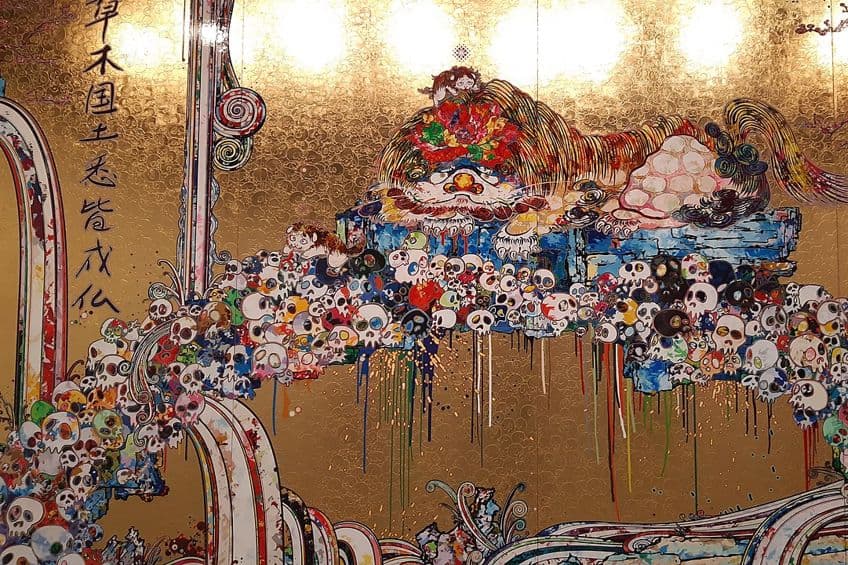
Dashi Namdakov (1967 – Present)
| Artist Name | Dashi Namdakov |
| Date of Birth | 16 February 1967 |
| Nationality | Siberian |
| Associated Movements, Themes, and Styles | Contemporary art, North Asian art, figurative art, Buryat and Buddhist cultures, Eurasian Steppes art, Buddhist mythology, and semi-precious materials |
| Mediums | Graphic art, sculpture, design, and jewelry-making |
| Famous Artworks |
|
Born in 1967 in the village of Ukurik, now Transbaikalia, renowned contemporary Siberian artist Dashi Namdakov hails from a lineage of Northern Asia’s best blacksmiths, artists, and craftsmen. Namdakov’s practice integrates semi-precious materials alongside mixed media and unconventional materials like bone to forge interesting sculptures that reminisce on the elements of his national culture. From Buddhist motifs to central Asian traditions, Namdakov immerses viewers in a unique presentation of his culture and traditions, which were exhibited first at the Irkutsk Art Museum in 2000, followed by Central House of Artists in Moscow, leading to his success in the Moscow art world. A few techniques employed by Namdakov include forging and casting materials like copper and gold while working with mammoth tusks, wood, and horse hair, giving his work a historical overture. Some of his most famous works include She-Guardian in 2015 and a massive statue of Genghis Khan, unveiled in Hyde Park, in London in 2012.
Today, Namdakov’s works can be found at many prestigious art institutions across the globe, including the Russian Ethnographic Museum and the State Museum of Oriental Art among many other museums in Europe.
Kitti Narod (1976 – Present)
| Artist Name | Kitti Narod |
| Date of Birth | 13 May 1976 |
| Nationality | Thai |
| Associated Movements, Themes, and Styles | Contemporary art, Asian art, human connection, daily life, and optimism |
| Mediums | Painting and sculpture |
| Famous Artworks |
|
Kitti Narod is a renowned contemporary Thai sculptor and painter whose works draw attention to the simple pleasures of life. The globally recognized painter explores themes of optimism and joy through his gentle portrayals of human connection and everyday life. Narod attended the Wittayalai Poh Chang Art College and the Rajamonkong Institute of Technology in Bangkok and has since exhibited across the globe. The utopian outlook found in his work has drawn criticism from audiences who believe that his view may seem unrealistic, however, his work continues to unite those who need hope and optimism in a period where there are many social divisions. Narod’s compositions also achieve this by focusing on subjects that depict the aspects of life one would call “mundane”, such that one’s perspective can tune into the beauty of routine aspects. His work also makes the feeling of euphoria seem more achievable by confronting viewers with simple compositions that evoke both the physical and spiritual complexities of simple life activities. Since 2021, Narod’s works have outperformed their estimates on auction, exceeding 170%.
Narod has appeared in many solo shows and exhibited in cities like Melbourne, Singapore, and London.
Mandy El-Sayegh (1985 – Present)
| Artist Name | Mandy El-Sayegh |
| Date of Birth | 16 July 1985 |
| Nationality | Malaysian-British |
| Associated Movements, Themes, and Styles | Contemporary art, Asian art, artifacts, popular culture, map-making, and cultural hybridity |
| Mediums | Installation, painting, collage, and video art |
| Famous Artworks |
|
Malaysian-British artist Mandy El-Sayegh is based in London and is best known as one of the leading contemporary artists whose works debuted on auction in 2022 and successfully sold within the five-figure sums. El-Sayegh’s practice encompasses her use of drawing, writing, and installation, which reflect on her concept of “part-whole” relationships and influences from her father’s calligraphy style, unconventional materials, and print media. Her works showcase her eye for assembling seemingly non-traditional materials into “realized” and complete artworks that, through the process of creating, result in meaningful and cumulative artworks. A few of her works also repeat the same motifs to illustrate how the significance of information shifts when it moves through different contexts. Today, El-Sayegh’s works can be found in numerous collections among her track record of solo shows across many well-known galleries. Additionally, the artist also produces large-scale paintings, videos, and immersive experiences that further enhance her inquiry into how societal, cultural, and political orders and structures are born.
Of her most intriguing works are her “quasi-archives” and “net-grid canvases”, which reflect El-Sayegh’s ideas.
Anna Park (1996 – Present)
| Artist Name | Anna Park |
| Date of Birth | 26 July 1996 |
| Nationality | South Korean |
| Associated Movements, Themes, and Styles | Contemporary art, abstract art, charcoal art, identity, vulnerability, self-reflection, American culture, emotion, and chaos |
| Mediums | Drawing |
| Famous Artworks |
|
Globally renowned South Korean artist Anna Park made her debut in 2022 and has since been in demand well into 2023. Park is recognized for her energetic and emotionally impactful charcoal works, which have maintained a consistent six-figure presence in auctions. Anna Park graduated from the New York Academy of Art and has since earned significant recognition, including representation by Blum & Poe. Park was born in 1994 and arrived in the United States with her family, settling in Salt Lake City. Her early mentor was Bruce Robertson, who was drawn in by her charcoal drawings and recruited the young artist to practice figure drawing. Park’s classes with Robertson motivated her to pursue drawing even further and she dove in passionately toward her practice in fine art. Her love for the medium charcoal is also inspired by figures like Cecily Brown and Michael Grimaldi, from whom Park learned to admire and develop a refined talent for expressing the forgivingness and somewhat abstract nature of charcoal.
These 13 famous Asian artists have added to the diverse range of artistic styles and complex methodologies that inform their practices. By closely examining the contributions of artists from the Asian diaspora, one can grasp a clearer perspective of the Asian continent and the ways that its history has affected its people and the development of transcultural art languages.
Take a look at our Asian artists webstory here!
Frequently Asked Questions
What Is Asian Art?
The genre Asian art refers to a broad category of art produced by artists who are of Asian descent or are part of the wider Asian diaspora. This was used to categorize art produced by artists from Asian countries, consisting of artists originating from 48 different countries on the continent. Asian art encompasses art from prehistory to contemporary practices and has many sub-genres, depending on the cultural nuances and differences between each country and the socio-political influences on the continent.
Who Are the Three Most Famous South Asian Artists?
Raja Ravi Varma (1848 – 1906), Amrita Sher-Gil (1913 – 1941), and Maqbool Fida Husain (1915 – 2011) are among the three most famous South Asian artists of the early and mid-modern periods.
Who Are the Three Most Famous Asian Master Painters?
Gu Kaizhi (345 CE – 406 CE), Fan Kuan (960 CE – 1030 CE), and Katsushika Hokusai (1760 – 1849) are among the most famous Asian master painters. While these are the greatest Chinese and Japanese master painters, there are many additional renowned Asian artists from different periods in art history.
Who Are the Three Most Famous Contemporary Asian Artists?
Yayoi Kusama (1929 – Present), Ai Weiwei (1957 – Present), and Takashi Murakami (1962 – Present) are regarded as the top three most famous contemporary Asian artists to date. These artists are of Japanese and Chinese descent and are recognized for their contributions to systemic critique, exploration of post-war Japanese aesthetics, and their multidisciplinary practice.
Jordan Anthony is a film photographer, curator, and arts writer based in Cape Town, South Africa. Anthony schooled in Durban and graduated from the University of the Witwatersrand, Johannesburg, with a Bachelor of Art in Fine Arts. During her studies, she explored additional electives in archaeology and psychology, while focusing on themes such as healing, identity, dreams, and intuitive creation in her Contemporary art practice. She has since worked and collaborated with various professionals in the local art industry, including the KZNSA Gallery in Durban (with Strauss & Co.), Turbine Art Fair (via overheard in the gallery), and the Wits Art Museum.
Anthony’s interests include subjects and themes related to philosophy, memory, and esotericism. Her personal photography archive traces her exploration of film through abstract manipulations of color, portraiture, candid photography, and urban landscapes. Her favorite art movements include Surrealism and Fluxus, as well as art produced by ancient civilizations. Anthony’s earliest encounters with art began in childhood with a book on Salvador Dalí and imagery from old recipe books, medical books, and religious literature. She also enjoys the allure of found objects, brown noise, and constellations.
Learn more about Jordan Anthony and the Art in Context Team.
Cite this Article
Jordan, Anthony, “Famous Asian Artists – An Introduction to This Diverse Diaspora.” Art in Context. January 8, 2024. URL: https://artincontext.org/famous-asian-artists/
Anthony, J. (2024, 8 January). Famous Asian Artists – An Introduction to This Diverse Diaspora. Art in Context. https://artincontext.org/famous-asian-artists/
Anthony, Jordan. “Famous Asian Artists – An Introduction to This Diverse Diaspora.” Art in Context, January 8, 2024. https://artincontext.org/famous-asian-artists/.



